Afghanistan |
|
|
|
| Übersicht – Contents: | |
Diese Seite ist Teil des Projektes
Afghanistan |
|
|
|
| Übersicht – Contents: | |
Flagge – Flag: |
|
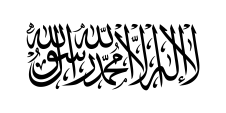 |
seit/since 15.Aug.2021 Nationalflagge – national flag, Seitenverhältnis – ratio = 1:2, Quelle/Source: Own work based on: the flag raised at a 17 August 2021 Taliban press conference, Public domain, via Wikimedia Commons |
historische Flaggen – historical Flags: |
|
 |
1880–1901, Nationalflagge – national flag, Emirat Afghanistan – Emirate of Afghanistan, Seitenverhältnis – ratio = 3:5, Quelle/Source nach/by: Wikipedia (D)   |
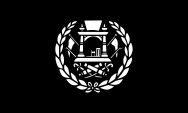 |
1901–1919, Nationalflagge – national flag, Emirat Afghanistan – Emirate of Afghanistan, Seitenverhältnis – ratio = 3:5, Quelle/Source nach/by: www.afghan-network.net, 2010, Flags, Wikipedia (D), QWerk. [CC BY-SA 3.0], via Wikimedia Commons   |
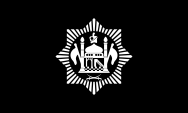 |
1919–1921, Nationalflagge – national flag, Emirat Afghanistan – Emirate of Afghanistan, Seitenverhältnis – ratio = 3:5, Quelle/Source nach/by: www.afghan-network.net, 2010, Flags, Wikipedia (D), Flanker. [Public domain], via Wikimedia Commons   |
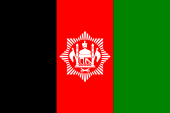 |
1929–1931, Nationalflagge – national flag, Königreich Afghanistan – Kingdom of Afgh., Seitenverhältnis – ratio = 2:3, Quelle/Source nach/by: www.afghan-network.net, 2010, Flags, Wikipedia (D)   |
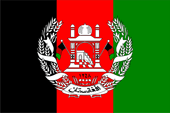 |
1931–1974, Nationalflagge – national flag, Königreich Afghanistan – Kingdom of Afgh., Seitenverhältnis – ratio = 2:3, Quelle/Source nach/by: www.afghan-network.net, 2010, Flags, Derivative work by Orange Tuesday at en.wikipedia based on OpenClipart file is by Andrew Dunhan [Public domain], via Wikimedia Commons |
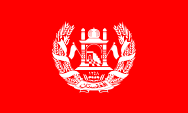 |
1928–1973, |
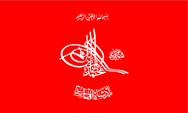 |
1928–1973, Rückseite der Flagge des Schah – flag of the Shah (reverse), Seitenverhältnis – ratio = 3:5, Quelle/Source nach/by: Das Flaggenbuch |
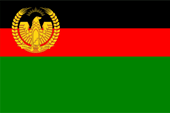 |
1974–1978, Nationalflagge – national flag, Republik Afghanistan – Republic of Afgh., Seitenverhältnis – ratio = 2:3, Quelle/Source nach/by: www.afghan-network.net, 2010, Flags, Wikipedia (D), Orange Tuesday (talk) at en.wikipedia. [Public domain], from Wikimedia Commons |
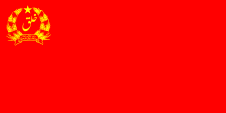 |
1978–1980, Nationalflagge – national flag, Dem. Rep. Afghanistan – Dem. Rep. of Afgh., Seitenverhältnis – ratio = 1:2, Quelle/Source nach/by: www.afghan-network.net, 2010, Flags, Wikipedia (D), Orange Tuesday [Public domain], via Wikimedia Commons |
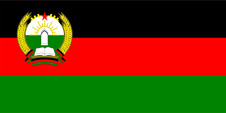 |
1980–1987, Nationalflagge – national flag, Dem. Rep. Afghanistan – Dem. Rep. of Afgh., Seitenverhältnis – ratio = 1:2, Quelle/Source nach/by: www.afghan-network.net, 2010, Flags, Corel Draw 4, Wikipedia (D) |
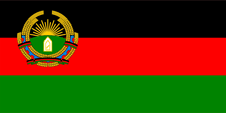 |
1987–1992, Nationalflagge – national flag, Seitenverhältnis – ratio = 1:2, Quelle/Source nach/by: www.afghan-network.net, 2010, Flags, Wikipedia (D), Orange Tuesday. [Public domain], from Wikimedia Commons |
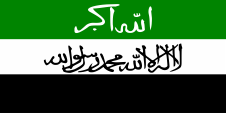 |
1992, Nationalflagge – national flag, Seitenverhältnis – ratio = 1:2, Quelle/Source nach/by: www.afghan-network.net, 2010, Flags |
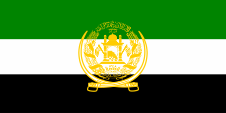 |
1992–2002, 1. Nationalflagge des Islamischen Staats Afghanistan – national flag of the Islamic State of Afghanistan 2. Flagge der Nordallianz – flag of the Northern Alliance, Seitenverhältnis – ratio = 1:2, Quelle/Source nach/by: Flags of all Nations, User:Saul ip [GFDL or CC BY-SA 4.0], via Wikimedia Commons   |
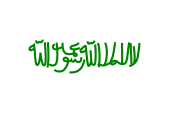 Die obige Flaggendarstellung wurde einer Vorlage nachgestaltet, die freundlicherweise von Herrn Frank Grübe zur Verfügung gestellt wurde – The upper flag depiction was patterned by a template, which was kindly given by Mister Frank Grübe. |
1996–2001, 1. Nationalflagge des Islamischen Emirats Afghanistan – national flag of the Islamic Emirate of Afghanistan, 2. Flagge der Taliban-Miliz – flag of Taliban Militia, Seitenverhältnis – ratio = 2:3 |
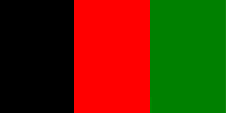 |
28.Jan.2002 – 05.Feb.2002, Nationalflagge – national flag, Seitenverhältnis – ratio = 1:2 |
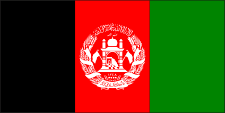 |
05.Feb.2002 – 04.Jan.2004, Nationalflagge – national flag, Seitenverhältnis – ratio = 1:2, Quelle/Source nach/by: Nationalflaggen der Welt, Antemister, arms created by Dbenbenn [CC BY 3.0], via Wikimedia Commons |
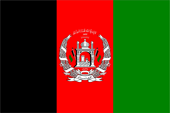 |
04.Jan.2004–19.Aug.2013, Nationalflagge – national flag, Seitenverhältnis – ratio = 2:3, Quelle/Source nach/by: Wikipedia (D), Bahij Virtual Academy [CC BY-SA 4.0], from Wikimedia Commons |
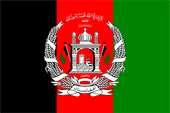 |
19.Aug.2013–15.Aug.2021 Nationalflagge – national flag, Seitenverhältnis – ratio = 2:3, Quelle/Source nach/by: Wikipedia (D), Bahij Virtual Academy [CC BY-SA 4.0], from Wikimedia Commons |
Bedeutung/Ursprung der Flagge – Meaning/Origin of the Flag: |
|
| Die heutige Flagge Afghanistans wurde am 15. August 2021 eingeführt, nachdem die Taliban-Miliz erneut die Macht in Afghanistan ergiffen hatte. Sie ist einfarbig weiß und zeigt in schwarzer arabischer Schrift die Schahada, das islamische Glaubensbekenntnis. Sie lehnt sich bewusst an die Flagge Saudi-Arabiens an, denn die Ideologie der Taliban geht auf den wahabitischen Islam in Saudi-Arabien zurück. |
The today's flag of Afghanistan was introduced on 15th of August in 2021 after the
Taliban militia regained power in Afghanistan. It is solid white and shows
the Shahada, the Islamic creed, in black Arabic script. It leans consciously
on the flag of Saudi Arabia, because the ideology of the Taliban goes back
to Wahabi Islam in Saudi Arabia. |
| Die bis zum 15. August 2021 gültige Flagge Afghanistans wurde am 19.08.2013 eingeführt und zeigte drei senkrechte Streifen in Schwarz, Rot und Grün. In der Mitte das Staatswappen. Die Flagge entsprach in etwa dem Modell welches bis 1974 im Königreich Afghanistan gültig war. Am oberen Ende des Wappens wurde lediglich die Schachada (islamisches Glaubensbekenntnis) eingefügt. | The to 15th of August in 2021 used flag of Afghanistan was introduced on 19th of August in 2013 and showed three vertical stripes, black, red and green, with the coat of arms of the state in the centre. The flag correlated nearly with the model which was valid until 1974 in the Kingdom of Afghanistan. At the top of the coat of arms only the chessada (Islamic creed) was added. |
| Bedeutung der ehemaligen Farben: Schwarz steht für die dunkle Vergangenheit, Rot symbolisiert das in den Freiheitskämpfen vergossene Blut, und Grün steht für den Islam. Ebenso ist eine rein islamische Interpretation der Farben möglich: Rot ist die Farbe von Omar, dem zweiten Kalifen; Grün steht für die Fatimiden, eine ismailitisch-schiitische Kalifendynastie, die auf den vierten Kalifen Ali zurückgeht; und Schwarz steht für die Abbasiden, eine Kalifendynastie, die auf den Kalifen Abbas I. zurückgeht. Zur Zeit des Königreiches 1929–1974 waren die schwarz-rot-grünen Streifen der Flagge schon einmal senkrecht angeordnet. Mit der Machtergreifung von Mohammed Daud Khan, und mit der Bildung der präsidialen Republik wurden diese waagrerecht. Nach einem kommunistischen Umsturz, geführt von M.N. Taraki, wurde 1978 bis 1980 eine einfarbig rote, kommunistische Flagge eingeführt. Nach einen Aufstand und internen Machtkämpfen kam B. Karmal an die Macht, sowjetische Truppen marschierten ein, und es wurde eine waagerecht gestreifte Flagge eingeführt, die ein Wappen mit den historischen Elementen, ergänzt um einen roten Stern und einen aufgeschlagenen Koran, enthielt. Mit dem Regimewechsel von B. Karmal auf Dr. M. Najibullah wurde 1987 auch das Wappen geändert. Der Stern und der Koran wurden entfernt. Nach der Machtübernahme der Mudschaheddin im Jahre 1992 entschied man sich für neue Nationalfarben, und zwar Grün, Weiß und Schwarz. Die Farbe Weiß stand hier für die Zukunft. Im religiös-islamischen Sinne steht Weiß für die Omajiaden, eine Kalifendynastie, die auf den fünften Kalifen Moawija I. zurückgeht. |
Meaning of the former colors:
black stands for the dark past, red symbolizes the in the fights for freedom
given blood, and green stands for the Islam. Just as is possible a pure
islamic interpretation of the colors: Red is the colour of Omar, the second
calif; green stands for the Fatimides, an Ismailitic-shiite calif-dynasty,
which goes back to the fourth Calif Ali; and black stands for the Abbasides,
a calif-dynasty, which goes back to the Calif Abbas I. Already during the times of the kingdom, 1929-1974, the black-red-green stripes of the flag had been arranged vertically. With the assumption of power by Mohammed Daud Khan, and on the occasion of the formation of the presidial republic they were arranged horizontally. After a communist coup, lead by M. N. Taraki, a red single coloured communist flag was introduced between 1978 and 1980,. After an uprising and internal struggles for the power, B. Karmal took control, Soviet troops marched in, and a horizontally striped flagt was introduced, which contained a coat of arms with the historical elements, completed by a red star and an opened Koran. With the change of regime from B. Karmal to Dr. M. Najibullah in 1987 the coat of arms was also changed. The star and the Koran were removed. After the takeover by the Mudjaheddin in 1992, they decided on new national colours, namely green, white and black. The colour white stood for the future. In the religious-Islamic sense white stands for the Omajiades, a calif-dynasty, which goes back to the fifth calif, Moawija 1st. |
|
Quelle/Source nach/by:
Flags of the World,
Wikipedia (D),
World Statesmen,
Die Welt der Flaggen,
Flaggen Wappen Hymnen Translator of the English text: Joachim Nuthack |
|
lokale Flaggen – local Flags: |
|
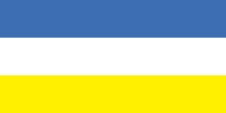 |
Flagge des Hazaradschat – flag of the Hazarajat, Seitenverhältnis = 1:2, Quelle/Source, nach/by: Wikipedia (EN) |
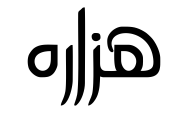 |
Flagge der Hasaren – flag of the Hazara (Hazaras), Quelle/Source, nach/by: Wikipedia (EN) |
Wappen – Coat of Arms: |
|
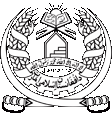 |
15.Aug.2021, Wappen von Afghanistan – coat of arms of Afghanistan, Quelle/Source: Falerístico, CC BY-SA 4.0, via Wikimedia Commons |
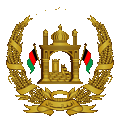 |
2004–2021, Wappen von Afghanistan – coat of arms of Afghanistan, Quelle/Source: Bahij Virtual Academy [CC BY-SA 4.0], from Wikimedia Commons |
Bedeutung/Ursprung des Wappens – Meaning/Origin of the Coat of Arms: |
|
| Das heutige Staatswappen Afghanistans wurde am 15. August 2021 eingeführt, nachdem die Taliban-Miliz erneut die Macht in Afghanistan ergriffen hatte. Es zeigt in den Farben Schwarz und Weiß einen Ährenkranz zwischen zwei gekreuzten Schwertern und in der Mitte eine aufgehende Sonne, einen aufgeschlagenen Koran, eine Predigtkanzel, den Namen des Staates, die Jahreszahl der Gründung des Staates und die Schahada, das islamische Glaubensbekenntnis, alles in arabischer Schrift. |
The today's coat of arms of Afghanistan was introduced on 15th of August in
2021 after the Taliban militia regained power in Afghanistan. It shows in the colors black and white a wreath of ears between two crossed swords and in the middle a rising sun, an open Koran, a sermon pulpit, the name of the state, the year the state was founded and the Shahada, the Islamic creed, all in Arabic script. |
| Das bis zum 15. August 2021 verwendete Staatswappen Afghanistans zeigte, auch vorher und über viele Jahre, eine offene Moschee mit Gebetsnische und Predigtkanzel und an den Seiten der Moschee je eine schräg nach außen gestellte Flagge. Die Moschee war von einem gebundenen Ährenkranz und seit 1996 auch von der Schachada umgeben. | The to 15th of August in 2021 used coat of arms of Afghanistan showed, also before and for many years, an open mosque with prayer-niche and sermon pulpit, and on the outside of each side of the mosque stands, obliquely placed, a flag. The mosque was encircled by a bound wreath of grain ears, and since 1996, by the Shakhada as well. |
| Quelle/Source: Nationalflaggen der Welt, Volker Preuß | |
Flugzeugkokarde – aircraft roundel: |
|
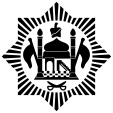 |
1924-1928, Flugzeugkokarde – aircraft roundel Quelle/Source nach/by: nach/by Wikipedia (EN) |
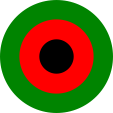 |
1929–1965, Flugzeugkokarde – aircraft roundel Quelle/Source nach/by: nach/by Wikipedia (EN) |
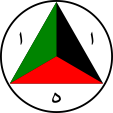 |
1965-1978, Flugzeugkokarde – aircraft roundel Quelle/Source nach/by: nach/by Wikipedia (EN) |
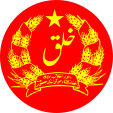 |
1979–1983, Flugzeugkokarde – aircraft roundel Quelle/Source nach/by: nach/by Wikipedia (EN) |
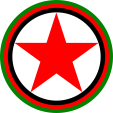 |
1983–1992, Flugzeugkokarde – aircraft roundel Quelle/Source nach/by: nach/by Wikipedia (EN) |
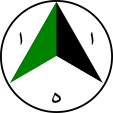 |
1992-2002, Flugzeugkokarde – aircraft roundel Quelle/Source nach/by: nach/by Wikipedia (EN) |
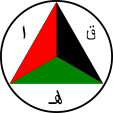 |
2002–2021, Flugzeugkokarde – aircraft roundel Quelle/Source nach/by: nach/by Wikipedia (EN) |
Landkarten – Maps: |
Lage – Position: |
Landkarte des Landes – Map of the Country: |
Zahlen und Fakten – Numbers and Facts: |
|
|
|
|
|
|
|
|
|
|
|
|
|
|
|
|
|
|
|
Geschichte: |
|
6./ 7. Jhd. v.Chr. · Baktrisches Reich 630 v.Chr. · persische Eroberung 330 v.Chr. · griechische Eroberung 323 v.Chr. · zum Seleukidenreich 3. Jhd. · zum persischen Sassanidenreich 664 · arabische Eroberung 977–1186 · Ghasnawidenreich 13./14. Jhd. · Mongoleneinfälle 16. Jhd. · zum persischen Safawidenreich 1747 · Staatsgründung v. Afghanistan 1838–1842 · Krieg gegen Großbritannien 1878–1880 · Krieg gegen Großbritannien 1907 · Britische Halbkolonie 09.08.1919 · Unabhängigkeit 1973 · Sturz der Monarchie 1979–1989 · durch Truppen der Sowjetunion besetzt 2001 · Beginn der US-amerikanischen Besetzung 2021 · Ende der US-amerikanischen Besetzung, Machtergreifung durch die Taliban-Miliz |
History: |
|
500/600 B.C.
· Baktrian Empire 630 B.C. · Persian conquest 330 B.C. · Greek conquest 323 B.C. · to the empire of the Seleucides 3rd cent. · to the Persian empire of Sassanides 664 · Arabian conquest 977–1186 · empire of Ghaznavides 13th/14th cent. · Mongol invasion 16th cent. · to the Persian Empire of the Safavides 1747 · establishment of Afghanistan 1838–1842 · war against Great Britain 1878–1880 · war against Great Britain 1907 · British half-colony 9th of August 1919 · independence 1973 · fall of the monarchy 1979–1989 · occupied by troops of the Soviet Union 2001 · onset of the US-american occupation |
| Quelle/Source: Atlas zur Geschichte, Wikipedia (D), World Statesmen |
Ursprung des Landesnamens – Origin of the Country's Name: |
|
| "Afghanistan" heißt wörtlich "Land der Afghanen". "Afghanen" ist die historische persische Bezeichnung für das Volk der Paschtunen, erstmals 1801 erwähnt, 1919 offiziell eingeführt. Die Paschtunen stellen mit 60% die Mehrheit in der Bevölkerung. | "Afghanistan" literally means "Land of the Afghans". "Afghans" is the historical Persian name for the people of the Pashtuns, first mentioned in 1801, officially introduced in 1919. The Pashtuns with 60% are the majority within the population. |
| Quelle/Source: Wikipedia (D) | |